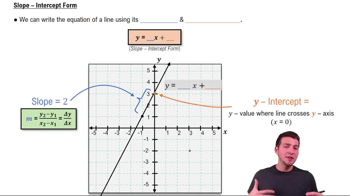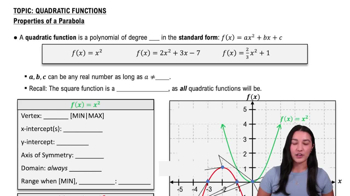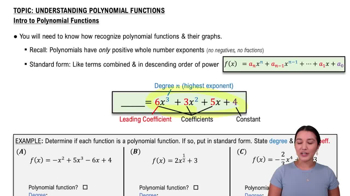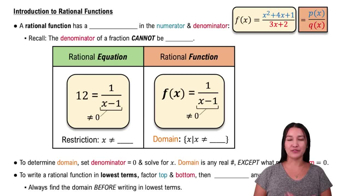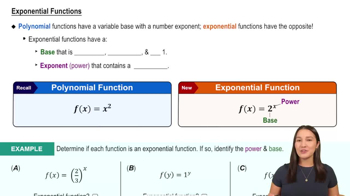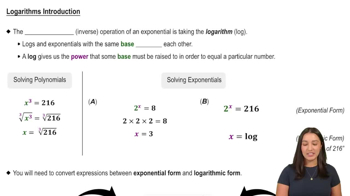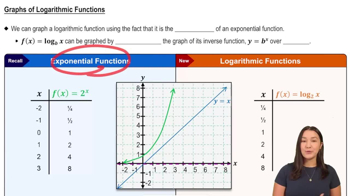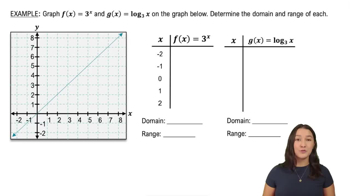Table of contents
- 0. Functions7h 52m
- Introduction to Functions16m
- Piecewise Functions10m
- Properties of Functions9m
- Common Functions1h 8m
- Transformations5m
- Combining Functions27m
- Exponent rules32m
- Exponential Functions28m
- Logarithmic Functions24m
- Properties of Logarithms34m
- Exponential & Logarithmic Equations35m
- Introduction to Trigonometric Functions38m
- Graphs of Trigonometric Functions44m
- Trigonometric Identities47m
- Inverse Trigonometric Functions48m
- 1. Limits and Continuity2h 2m
- 2. Intro to Derivatives1h 33m
- 3. Techniques of Differentiation3h 18m
- 4. Applications of Derivatives2h 38m
- 5. Graphical Applications of Derivatives6h 2m
- 6. Derivatives of Inverse, Exponential, & Logarithmic Functions2h 37m
- 7. Antiderivatives & Indefinite Integrals1h 26m
0. Functions
Common Functions
Problem 1.39
Textbook Question
Find the inverse f−1(x) of each function (on the given interval, if specified).
f(x)=10−2x
 Verified step by step guidance
Verified step by step guidance1
Start by replacing f(x) with y to make the equation easier to work with: y = 10 - 2x.
To find the inverse, swap x and y in the equation. This gives us: x = 10 - 2y.
Solve for y in terms of x. Begin by isolating the term with y: subtract 10 from both sides to get x - 10 = -2y.
Divide both sides by -2 to solve for y: y = (10 - x) / 2.
The inverse function is f^{-1}(x) = (10 - x) / 2. This is the expression for the inverse of the given function.
Recommended similar problem, with video answer:
 Verified Solution
Verified SolutionThis video solution was recommended by our tutors as helpful for the problem above
Video duration:
2mPlay a video:
Was this helpful?

 5:57m
5:57mWatch next
Master Graphs of Common Functions with a bite sized video explanation from Nick
Start learningRelated Videos
Related Practice



